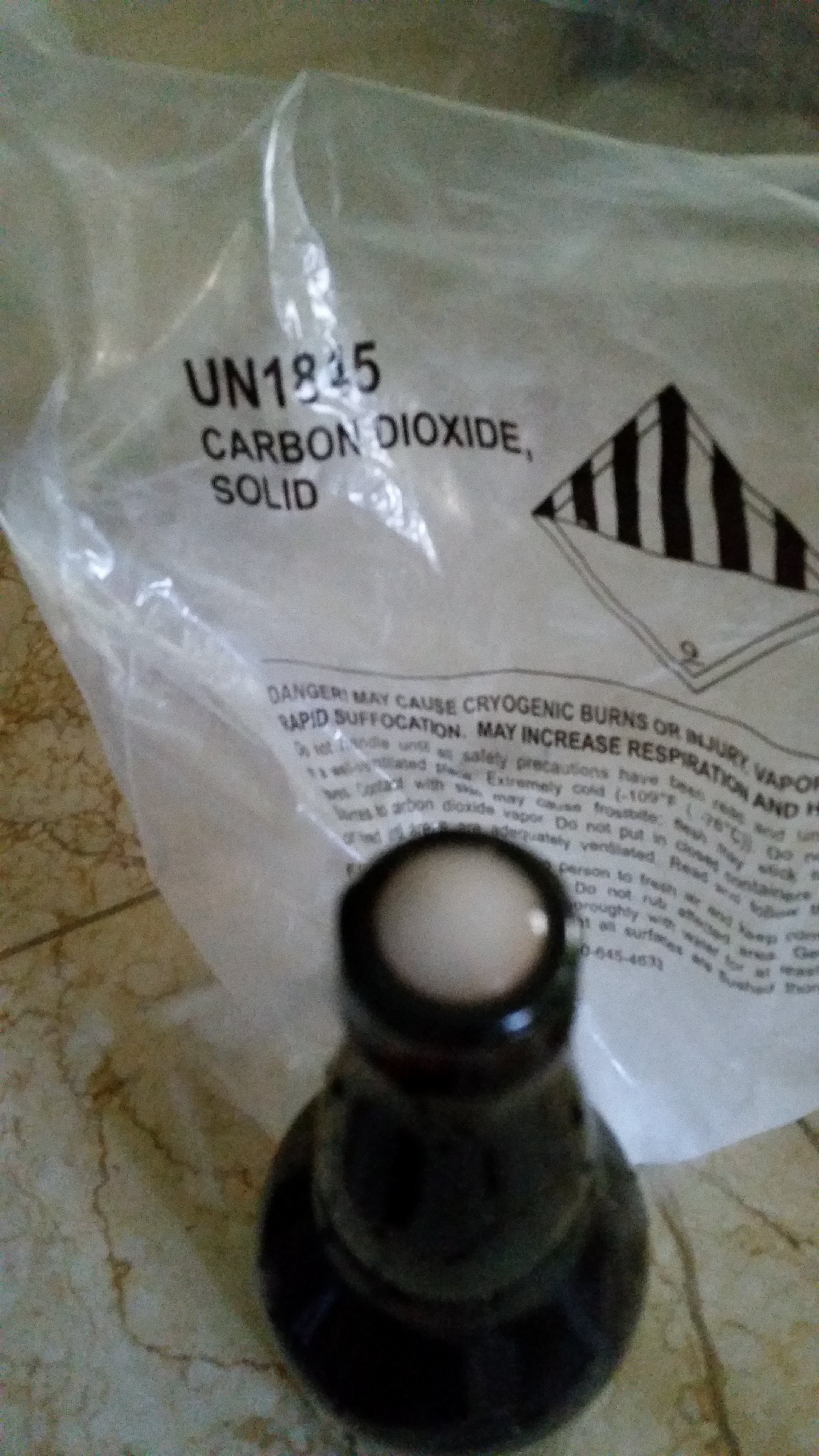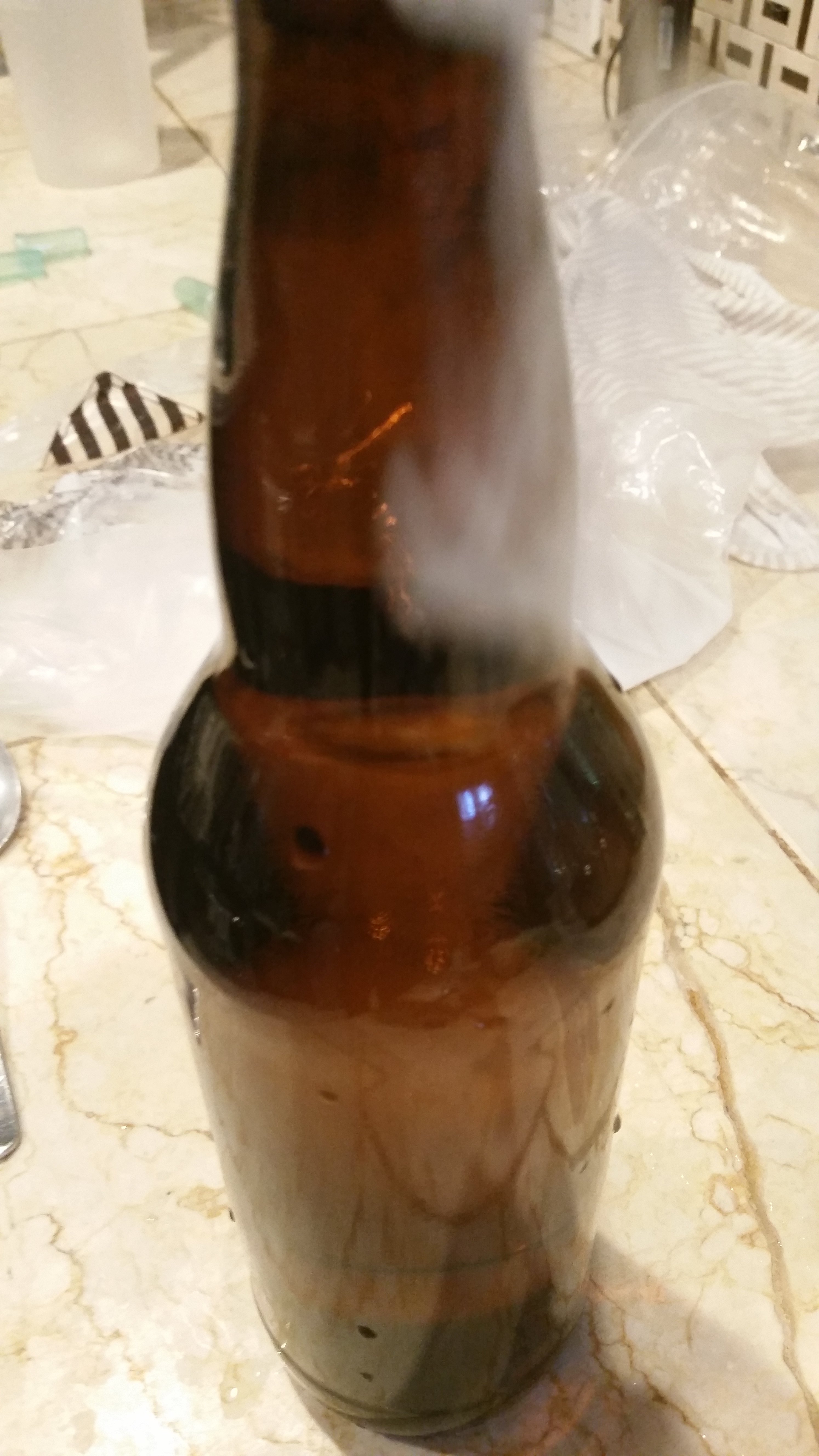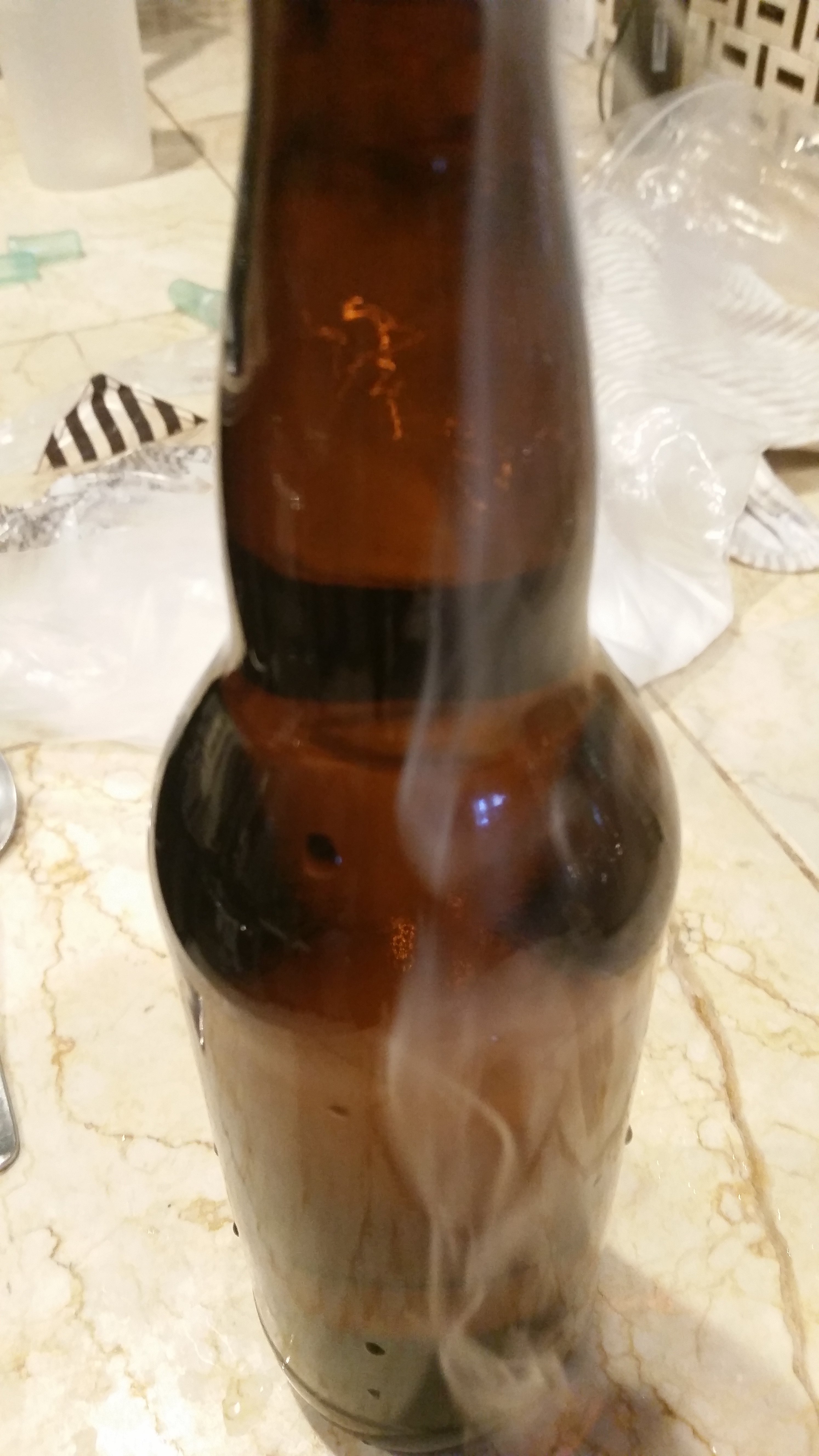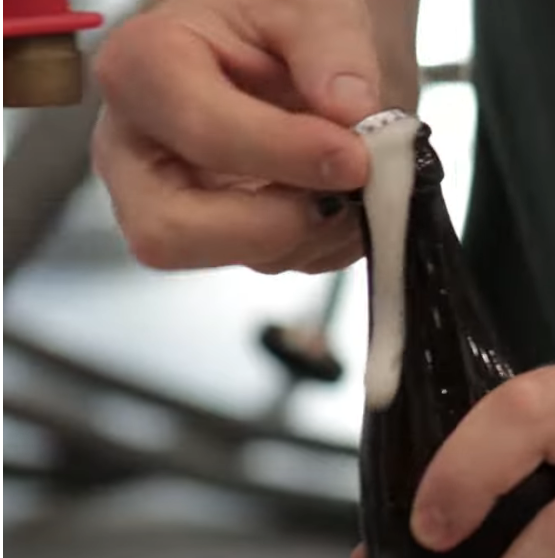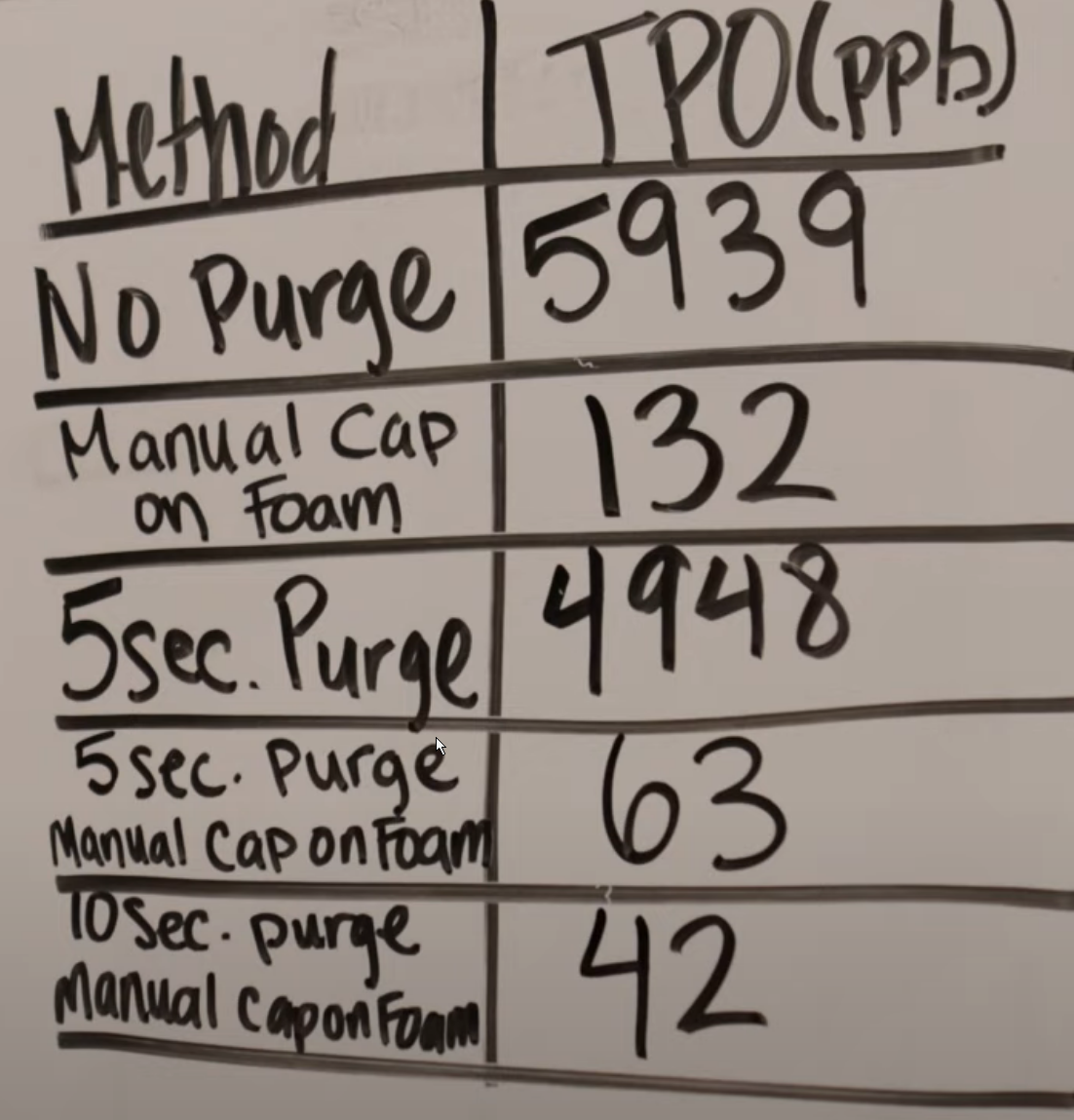Now the full story, for those who might be interested in the details (warning, it is a long post!):
On a quest to improve the quality of my hoppy beers, I recently became aware that post-fermentation oxidation is a real issue in these styles. If not managed properly, this seems to be one of the key factors contributing to rapid hop fade and staling in hop forward beers. Of course, I also read that switching to kegging is by far the best way to control this issue, since it allows closed transfers, easy purging with CO2, and so on. However, I’m not able to make the move to kegging just yet (although I’d love to, of course). So for the time being, I’ll have to make it work with my poor-man bottling setup. I believe I had been taking the necessary basic steps to reduce oxidation prior to and during bottling, such as avoiding unnecessary openings of the fermenter, transferring with minimal splashing, and filling with a bottling wand. Yet from what I’ve read, these simple measures may not be enough for a really hoppy beer. So for this latest IPA batch, not having any CO2 at hand, I bought a can of wine-preserving gas (brand name “Private Preserve”) to do some experimenting with purging bottles. It is a mixture of N2, Argon and CO2 ant it should do the same job as pure CO2. By the way, the beer was a “regular” AIPA of the west-coastish type, not a NEIPA.
The experiment consisted of three variants:
- Complete-purge: I purged both the empty bottle prior to filling, as well as the headspace after filling.
- Headspace-purge: I only purged the headspace after filling.
- No-purge: I didn’t purge anything, as I would usually do in all my previous batches.
I did 4 replicates for each variant (= 4 x 12 oz. flip-top bottles for each variant). I filled these 12 bottles approximately in the middle of the filling process. I did mix up the variants during filling, to avoid potential biases due to the time of filling and the specific part of the batch being filled at that moment. Afterwards I let them condition at 73-75 F for approx. one week, and then stored them in a basement at approx. 60-63 F.
I started doing the first side-by-side compares between variants about 5 weeks after bottling. The beer was hitting its prime at that point, and differences between purged vs. non-purged variants were already fairly noticeable. I did the last comparison approximately 3.5 months post bottling, and here is a picture of this last comparison (all three variants):


You can see how the “No-purge” variant is evidently darker. The differences in aroma/taste are not as dramatic as the colour would suggest, but they are noticeable. I found the overall hop character to be somehow duller in “No-purge” as compared to the two purged variants. Actually, I wouldn’t call “No-purge” a bad hoppy beer, by any means (for my taste at least). Yet in such a direct comparison, the two purged variants win, and there is no doubt about that. The “No-purge” version has also developed a slightly sweeter, maltier taste and some kind of weird spicy note in the aftertaste which I am not able to classify (maybe somehow medicinal or metallic?...but it is quite subtle). Anyway, in summary, I found that the two purged variants to come across as fresher, brighter, and also noticeably drier and crisper.
Now the second, and at least for me most interesting result: there is NO noticeable difference between the two purged variants, neither in color nor in aroma/taste. This means that purging the bottle prior to filling did not bring any additional benefit. By the way, these observations were consistent over all four replicates and the different sampling time points.
I conclude that, for my own bottle-conditioning process, purging the headspace after filling is enough to reduce oxidation of hop compounds in a significant way, and that an additional purge of the bottle prior to filling is an unnecessary waste of time and money. The air remaining in the bottle headspace is the real culprit here. By the same logic, I think I’ll not bother purging the bottling bucket before transferring the beer onto it, and purging the headspace of the fermenter and of the bottling bucket during and after the transfer.
So how can we explain these results? We are talking about bottle-conditioned beer. Probably, the active yeast does indeed take care of most of the O2 being introduced during transferring and bottling (provided O2-pickup stays within a reasonably low range). However, the O2 in the headspace sits there, trapped in the bottle over a long period, and it will gradually diffuse into the beer. It will continue diffusing also when the yeast is no longer active, causing significant oxidation to hop aroma compounds. Of course, this theory is not my own invention: I read it multiple times on forums. Yet I couldn’t find a consensus. Some people seem to argue that O2 pickup during transfers is the main culprit, and headspace-O2 is a secondary concern. Others even claim that yeast will consume the headspace O2 near completely during bottle conditioning, which is a myth as far as this small experiment can tell (as well as a couple other very similar experiments/experiences I came across on the web).
Now why do pro-brewers and more than one kegging homebrewer bother to purge ALL vessels during transfers, ALL kegs, bottles, headspaces and even tubing? I guess that is because they are packaging finished beer in most cases. Finished in the sense that it has completed fermentation and it won’t go through a secondary fermentation based on priming sugar. The beer was probably cold-crashed too, so not only there is less yeast in there, but above all, the yeast is not active. I can well believe that in such scenarios, oxidation happening during transfers is a real issue. I guess it is much less of an issue for the bottle-conditioning folks.
In conclusion, is it even worth to bother purging the bottle headspaces? I found evident differences in colour, but the differences in aroma and taste were more subtle. I guess I’ll continue doing this but just for my really hoppy beers. It might be worth it if you want to be anal or if you are sending the beers to a comp! ;-)
I’m eager to hear your thoughts on this subject J









































![Craft A Brew - Safale S-04 Dry Yeast - Fermentis - English Ale Dry Yeast - For English and American Ales and Hard Apple Ciders - Ingredients for Home Brewing - Beer Making Supplies - [1 Pack]](https://m.media-amazon.com/images/I/41fVGNh6JfL._SL500_.jpg)















